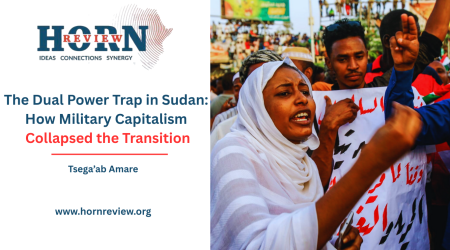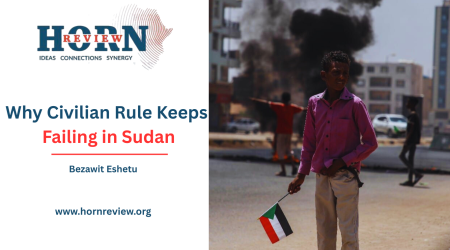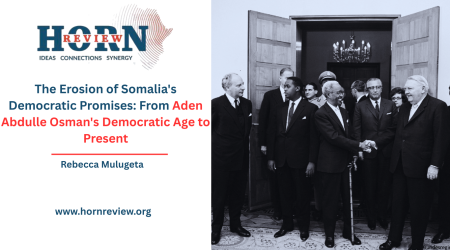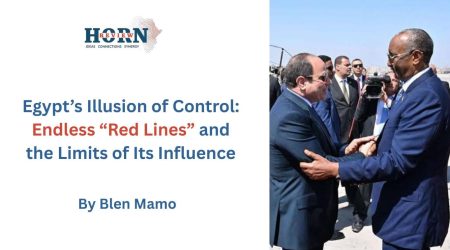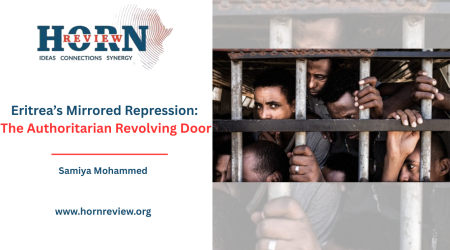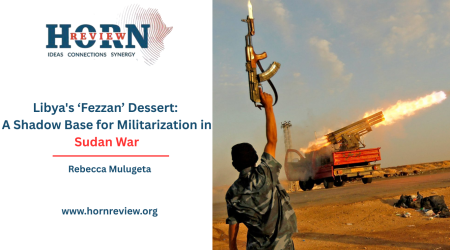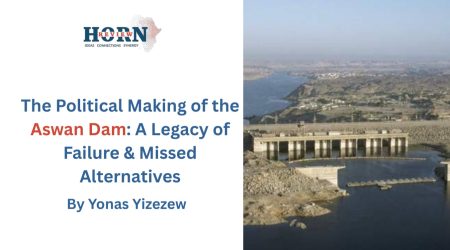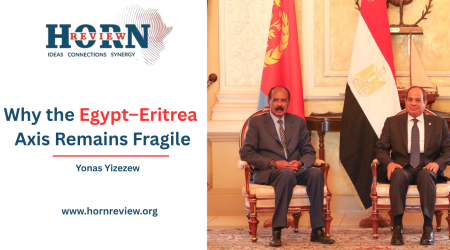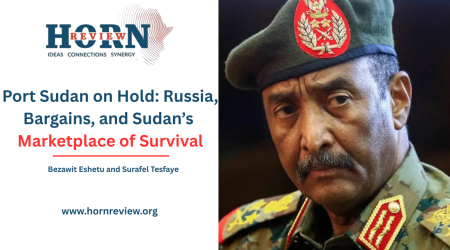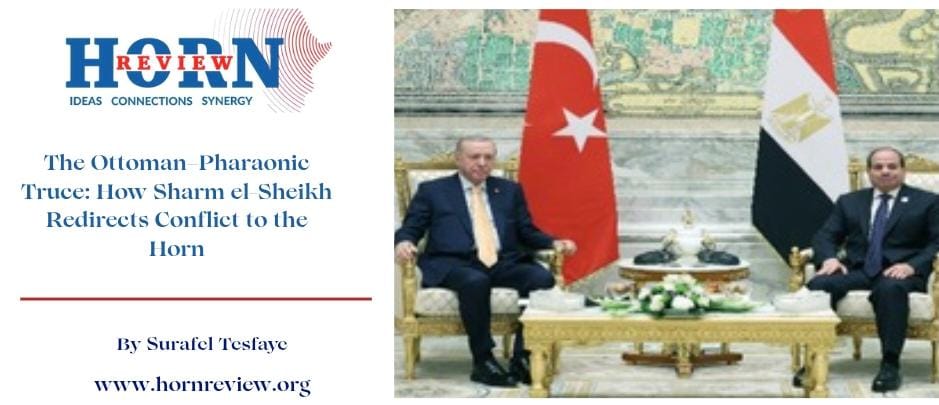
27
Oct
The Ottoman–Pharaonic Truce: How Sharm el-Sheikh Redirects Conflict to the Horn
In the shifting sands of Middle Eastern geopolitics, old rivalries do not die they evolve. For over a decade, Turkey under Recep Tayyip Erdogan has pursued a Neo-Ottoman vision, seeking to reclaim influence in lands once under Ottoman sway, from the Levant and North Africa to the distant Horn of Africa. This approach blends Islamism with proxy support and bold maritime expansions, extending soft power through aid, military bases, and economic footholds in places like Somalia and Libya.
Building on this historical backdrop, Egypt’s Abdel Fattah el-Sisi has championed a Neo-Pharaonic narrative, framing his nation as the timeless guardian of Arab sovereignty. Rooted in pharaonic symbolism for legitimacy, it’s a secular, nationalist stance that rejects Turkish-style political Islam, prioritizing dominance over the Nile and Red Sea. These dueling ideologies are not new; they mirror 19th-century clashes between the Ottoman Empire and Egypt under Muhammad Ali, who vied for control over Sudan and the Red Sea. Today, under the guise of globalization and neo-imperial ambitions, that same geography is reigniting.
This silent cold war between Ankara and Cairo has long defined regional fault lines. It influenced proxy battles in Libya’s civil war, the blockade against Qatar, competitions for Red Sea military bases, and fierce contests over the Muslim Brotherhood’s role. Tensions boiled over after Sisi’s 2013 coup, which ousted the Brotherhood-backed president Mohamed Morsi a figure Erdogan openly supported. What followed were proxy skirmishes in Libya and Syria, alongside heated disputes over Eastern Mediterranean gas reserves.
The rivalry’s toll was heavy. It drained both nations’ resources, especially amid economic struggles, and created openings for outsiders. Iran seized the moment to expand in Syria, Lebanon, and Yemen. The UAE and Saudi Arabia amplified their sway across Africa. Israel stepped in to fill security voids in Gaza and the Red Sea. Even the Grand Ethiopian Renaissance Dam (GERD) dispute festered, becoming a key weapon in Egypt’s arsenal against Ethiopia’s upstream assertiveness. Erdogan and Sisi eventually recognized that their feud was empowering rivals, leaving them vulnerable in a region marked by U.S. disengagement and Iran’s rise.
This realization built on momentum from joint military drills like “Sea of Friendship-2025” in September, the first in 13 years, signaling a peace deal to end their influence rivalry. Egypt pursued this purposefully to avoid solo confrontations, sharing the burden with Turkey. Mutual gains emerged quickly: trade targets exceeding $10 billion and coordinated efforts on Gaza. For Erdogan, Egypt’s buy-in prevents Neo-Ottoman overstretch that is because Egypt has not shifted on its core interests, especially in Libya where they previously backed opposing sides. For Sisi, it’s a safer path to confront Ethiopia and its rival without going solo. While these alliances cannot, of course, resolve political crises and decades-long rivalry, they can be considered a tactical move for action at the present time because To challenge the Turkey-Libya deal, Egypt and Greece signed their own maritime agreement in 2020.
Yet, this isn’t genuine alignment it’s “non-antagonistic alignment,” freeing resources for external ventures. The summit eased Eastern Mediterranean frictions, thawing gas forums and reducing direct clashes. Nevertheless, peace in one arena breeds turmoil elsewhere. With Sunni powerhouses no longer sparring, the region’s “pressure valve” swings south. Geopolitical tensions do not evaporate; they migrate, turning the Horn of Africa into the new frontier for influence.
Here, Turkey and Egypt’s interests overlap in the Red Sea-Horn corridor. Turkey’s “Africa Strategy 2025” has deepened its Somali roots, with bases like Camp TURKSOM training troops and managing Mogadishu’s port and airbase. Egypt’s “Red Sea Initiative” strengthens Sudan ties, backing the Sudanese Armed Forces, anti-Ethiopian groups, and even arming Somalia. Moreover, Egypt’s expressed interest to establish a military base in Somalia to pressure Ethiopia and counter Ankara’s plan to create a military base in the Sudanese Suakin Island underscores the strategic importance of Turkey’s role in Somalia and Egypt’s tactical move. Together, they pursue shared goals: curbing migration flows, securing Red Sea chokepoints, and building economic corridors. Turkey’s soft power meshes with Egypt’s hard military edge, creating parallel operations without formal alliance. Yet, these overlapping interests create cracks Ethiopia can exploit by aligning with Turkey to outsmart Egypt in the Horn.
The Horn will feel the brunt of these ripple effects, with Ethiopia in the crosshairs. From the north, Egypt ramps up opposition to the GERD and Ethiopia’s Red sea access. From the southeast, Turkey leverages Somalia subtly to undercut Ethiopian sway, solidifying Red Sea positions. Ethiopia, as the geopolitical hinge the only continental force capable of balancing both now faces a diplomatic pincer. Its internal division of the horn countries further heighten the vulnerability, turning the region into a potential hotspot for economic sanctions or proxy fights.
This shift echoes historical patterns: when cold wars end, new ones erupt. Just as the U.S.-Soviet thaw sparked chaos in Yugoslavia, Iraq, and Somalia, the Ankara-Cairo truce redirects instability southward. The Sharm el-Sheikh peace simply moves the storm to the Horn.
The détente also forces Iran to seek new arenas of influence, driving it to expand deeper into the Horn of Africa through Sudanese militias and an emerging alliance with Eritrea. This opens a fresh front for proxy competition between Tehran and the newly reconciled Sunni powers and common foes like Iran and Houties could forge a Shia axis. At the same time, Russia and China’s growing support for Ethiopia, while strategically valuable, risks drawing Addis Ababa into a wider contest among rival global powers. As the Turkey–Egypt understanding strengthens the cohesion of Arab League and (OIC) organization of Islamic commission states around Red Sea and Nile issues, Ethiopia’s room for diplomatic maneuver could narrow, facing an increasingly united Arab front on its western and northern flanks. However, the other side, if the UAE doubles down on Ethiopia through Somaliland investments and UAE’s anti-Brotherhood bent might clashes with Turkey; it might splinter this emerging front.
Ethiopia holds a clear advantage amid these overlapping interests. With Somalia tilting toward Cairo, Addis Ababa should deepen its partnership with Turkey to blunt Egyptian pressure and outmaneuver Cairo’s plans. Practical steps include mutually beneficial quid pro quos: Ethiopia can position itself as a key logistical hub for Turkish goods entering the East African market under the (AfCFTA) framework. This would increase economic interdependence and secure Turkey’s vested interest in Addis Ababa’s stability. Such cooperation would also counter Egypt’s pervious move to secure port deal with Djibouti, which threatens Ethiopia’s main trade gateway. Strengthening joint military training programs and expanding trade pacts in exchange for political backing on UN votes and maritime security initiatives would further consolidate this partnership.
Egypt’s weapon supplies to fragile Somalia pose risks. They could arm Al-Shabaab or rebels threatening Ethiopia’s borders, Addis must deepen its defense pact with Turkey, using Ankara’s Somali presence to monitor smuggling and consolidate border security.
Iran’s growth via Houthis adds urgency; with Houthis and Al-Shabaab collaborating on arms and drones, aligning with Turkey minimizes these threats across the Red Sea. Ethiopia should engage Somaliland swiftly to secure Berbera port access, meddling in Somaliland-Turkey relations to sideline Egypt. If Somaliland and Turkey align, Ethiopia avoids a solo ride, mirroring Egypt’s multilateral balancing strategy.
Since Egypt aids PFDJ in Eritrea, this Turkey pivot secures Ethiopia’s eastern flank via alternative paths, outsmarting encirclement and redirecting focus to Sudan, western flanks, or northern borders. Do not expect Turkey as a full security shield against Egypt; instead, harness it as a diplomatic booster and technical collaborator. In an era where battles are fought over reputation and economics, any Egyptian overreach risks eroding foreign investment and African Union support, naturally restraining Cairo.
Ultimately, the Neo-Ottoman-Pharaonic convergence closes one chapter of rivalry but opens a volatile new one, forging a power vacuum that engulfs the Horn with potentially disastrous outcomes. Regional equilibrium is delicate; harmony in the Mediterranean often sows discord in Africa. Ethiopia stands at this critical juncture proactive, clever diplomacy is its best defense against encirclement. Fail to adapt and the Horn could become the Middle East’s next enduring crisis.
By Surafel Tesfaye, Researcher, Horn Review

